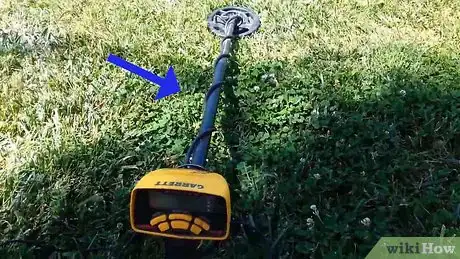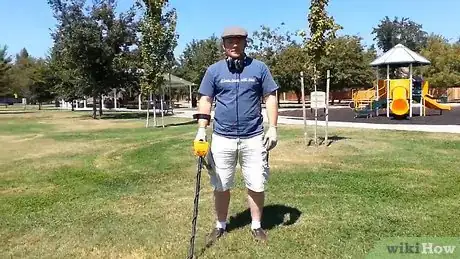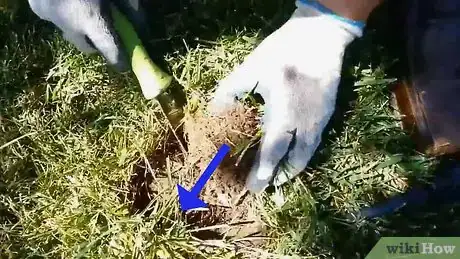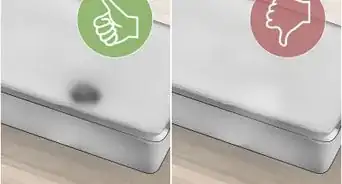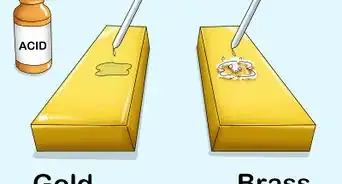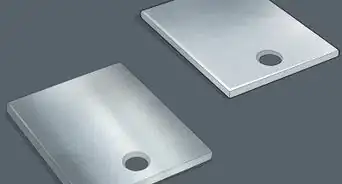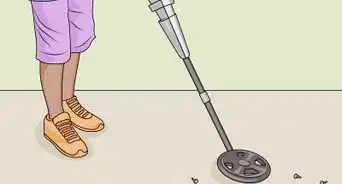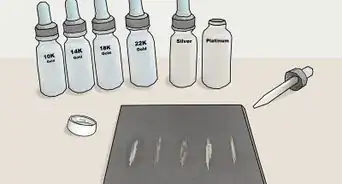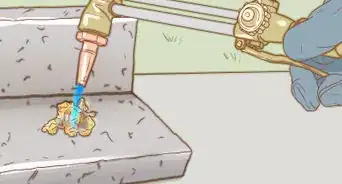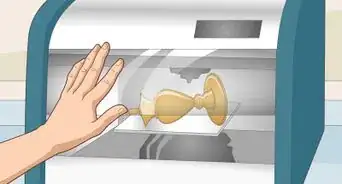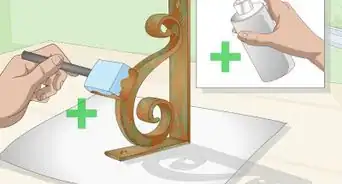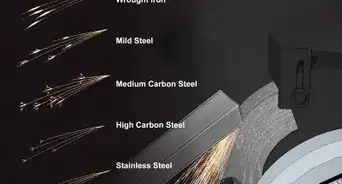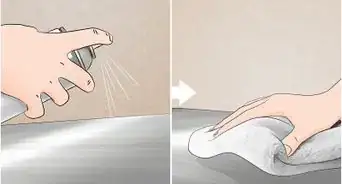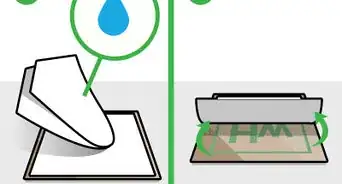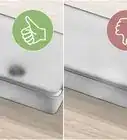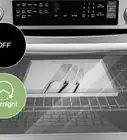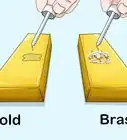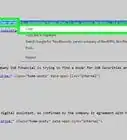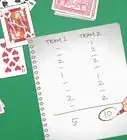This article was co-authored by wikiHow Staff. Our trained team of editors and researchers validate articles for accuracy and comprehensiveness. wikiHow's Content Management Team carefully monitors the work from our editorial staff to ensure that each article is backed by trusted research and meets our high quality standards.
wikiHow marks an article as reader-approved once it receives enough positive feedback. In this case, 98% of readers who voted found the article helpful, earning it our reader-approved status.
This article has been viewed 50,834 times.
Learn more...
Metal detecting is a surprising and worthwhile hobby. You can do it almost everywhere, and though you may not find something every time, your patience will pay off. Whether you're just curious about your backyard or want to go exploring, anyone can enjoy metal detecting.
Steps
Preparing to Go Out
-
1Purchase a metal detector. There are hundreds of models out there, but you don't need to most expensive one to begin with. While shopping, there are only a few features to consider, depending on your needs and engagement with the hobby. Some things to think about include:
- Your level of interest. There are many great, all-purpose finders good for most explorers. There are also deep-seeking detectors that allow the intrepid explorer to dig for serious treasures.
- All-purpose: Bounty Hunter Pioneer 505, Garrett Ace 250, White's Coinmasters, Minelab's X-Terra Series
- Deep-seeking: Nokta FORS CoRe Pro, Minelab's GPX 5000, OKM Black Hawk, Nokta Golden King
- Do you plan on beach-combing? Make sure that your metal detector is waterproof.
- Do you plan on looking up gold flakes and bits? You'll need a high-frequency, extra-sensitive detector like the Nokta FORS GOLD, Garrett's AT Gold or Fisher's Gold,Bugs.[1]
- Your level of interest. There are many great, all-purpose finders good for most explorers. There are also deep-seeking detectors that allow the intrepid explorer to dig for serious treasures.
-
Video Player is loading.
This is a modal window.
The media could not be loaded, either because the server or network failed or because the format is not supported.2Round up some basic scavenging supplies. Your metal detector is only part of the equation. You'll need a bit more gear, including:- Headphones: A big set of over-ear headphones are best, but anything will do. The metal-detector will beep when it comes across metal, sending sound through the headphones.
- Gloves: You'll be digging into the ground, sorting through dirt and metal, and be down on the ground a lot. Gloves will keep your hands safe and comfortable.
- Trowel: You'll need something to dig with, so get a nice trowel, at least 8-10" or longer.
- Pinpointer (Optional): This is a small, more precise metal detector, usually sold for $20-30. It can help find the object after the metal detector has found a patch of dirt with something in it.[2]
Advertisement -
3Find a good location to metal detect in. Places with high foot-traffic (beaches, parks, playgrounds), fields, and backyards are all great places to start looking. Once you're used to wielding your detector old ruins, houses, and abandoned areas will turn into treasure troves. Some other great spots include:
- Under ski lifts
- Churchyards
- Sand, dirt or grassy parking areas
- Recreational vehicle parks and campsites.
- Around resort areas.[3]
-
Video Player is loading.
This is a modal window.
The media could not be loaded, either because the server or network failed or because the format is not supported.4Get to know your metal detector's settings. All detectors are different, and reading the manual is key to getting the most out of yours. That said, there are some basic features you should know whether you read the manual or not:- Discrimination: Allows you to choose what kind of targets you want. For example, if you only want coins, you can set it to ignore iron objects. Useful in heavy trash areas or if you're searching for specific things.
- Sensitivity: Allows you to choose how precise the detector will be. This, again, helps you hone in: if there are pipes nearby and the detector won't stop beeping, lowering the sensitivity will help you find the good stuff.
- Detection Mode: This allows you to filter out certain objects, like coins, to make detection more precise.
- Ground Balance: Allows you to account for common minerals. If, for example, you keep getting pings on "iron" but find nothing, you can "balance out" the iron in the ground so that the machine doesn't beep for low levels of iron.[4]
Searching Effectively
-
Video Player is loading.
This is a modal window.
The media could not be loaded, either because the server or network failed or because the format is not supported.1Cover the ground effectively by sweeping the detector in an arc in front of you. As you walk, keep the detector roughly two feet in front of you. As you walk, sweep it back and forth in a half circle in front of you, roughly a foot to each side. Walk in a straight line so you don't re-test ground when you turn around.- You want to go "low and slow," and never touch the ground. Walk about half the speed as usual.
- The detector should be roughly 6" or less above the ground.
-
Video Player is loading.
This is a modal window.
The media could not be loaded, either because the server or network failed or because the format is not supported.2Move the detector in small circles to determine the precise location of an object after a beep. Stop immediately if you hear a beep. Slowly use the detector to find out exactly the spot it beeped at. If you can, increase the sensitivity on the metal detector as you get closer. Move the detector slowly back and forth, then up and down as you find the exact spot where the metal resides.- Many metal detectors even have breakdowns of metal type or potentially coin worth. Work slowly, reading the face of the metal detector as you learn how to use it.
-
Video Player is loading.
This is a modal window.
The media could not be loaded, either because the server or network failed or because the format is not supported.3Cut out any objects in a "plug." Your metal detector should tell you how deep the object is, and many trowels have rulers attached to the blade letting you know how deep you're digging. Cut a circular plug roughly 6" in diameter around the spot the metal detector picked up, then pull out the whole cylinder of dirt. -
Video Player is loading.
This is a modal window.
The media could not be loaded, either because the server or network failed or because the format is not supported.4Use a pin-pointer to determine if the metal is in the plug or the ground. If you don't have a pinpointer, place the plug of earth right under your metal detector. This can help you determine if your object is in the plug or the surrounding dirt. -
Video Player is loading.
This is a modal window.
The media could not be loaded, either because the server or network failed or because the format is not supported.5Gently sift through the plug, starting from the bottom, to find the metal. You want to preserve the dirt and any roots as much as possible. Use gloved fingers to feel through the plug until your find your object. -
Video Player is loading.
This is a modal window.
The media could not be loaded, either because the server or network failed or because the format is not supported.6Rescan the hole after finding the first object. It takes two seconds, but most people leave after digging out the first quarter. Your detector will ping the same amount if there is one piece of metal or five, so always rescan once you've dug a hole. Stuff tends to congregate together, so chances are good there will be something else. -
7Replace the plug into the earth to leave the site as you found it. No one wants to see a pockmarked, dug up park. The reason you dig in a plug is so that you can easily return the earth to the ground, allowing it to quickly recover. Once you replace the plug, push it firmly back into the ground to help set it.
-
Video Player is loading.
This is a modal window.
The media could not be loaded, either because the server or network failed or because the format is not supported.8Overlap your lines by a foot or so as you explore. Walk a long, straight line on your first pass. If you don't find anything, move over 1-2 feet and walk back to the right or left of your first line. Overlapping a bit allows the detector to pick up things it might miss on the fringe of your path. You'll be making a giant zig-zag pattern across your search area.- If you're feeling casual, just walking with the detector will work fine. But for a thorough, systematic search you'll need to stick to straight lines.
-
Video Player is loading.
This is a modal window.
The media could not be loaded, either because the server or network failed or because the format is not supported.9Hunt out heavily trafficked areas in each site. There are some places where you are almost guaranteed to find more metal, because people tend to drop more things of all sorts. After you've done an efficient, full sweep of the open ground, try out:- The edges of pathways and trails
- Under bleachers or hedges
- Areas in front of food stands, vending machines, etc.
- The perimeter of bandstands and gazebos.[5]
Community Q&A
-
QuestionWhat does it mean when I hear a ping, but it doesn't repeat when I scan the spot again?
 Community AnswerIt is likely to be ground mineralization. If the target is 'real', you will get the ping every time you scan and in any direction. Getting it constantly in one direction isn't always enough. Turn 90 degrees and scan again. If you have no pings, it's likely to be a false signal and you can move on.
Community AnswerIt is likely to be ground mineralization. If the target is 'real', you will get the ping every time you scan and in any direction. Getting it constantly in one direction isn't always enough. Turn 90 degrees and scan again. If you have no pings, it's likely to be a false signal and you can move on.
References
- ↑ http://www.kellycodetectors.com/catalog/library/five-questions/
- ↑ http://gometaldetecting.com/tips-beginner.html
- ↑ http://www.metaldetectingintheusa.com/where-to-go-metal-detecting.html
- ↑ http://www.aquaexplorers.com/metaldetectingbeginnersguide.htm
- ↑ http://www.metaldetectingintheusa.com/where-to-go-metal-detecting.html
- https://www.youtube.com/watch?v=N8KdUMlQZhM
About This Article
If you'd like to try metal detecting as a hobby, start by finding a location with a lot of foot-traffic, like a beach or playground, to give you the best chances of finding something. Once you’ve found a good spot, walk with the detector 2 feet in front of you, sweeping it back and forth in a half circle as you go. Make sure to move slowly and avoid letting the detector actually touch the ground. If you hear a beep, stop and move the detector in small circles over the area to find an item’s exact location. Then, use a trowel to dig into the ground and find your item. To learn how to get the most out of your metal detector’s settings, read on!
